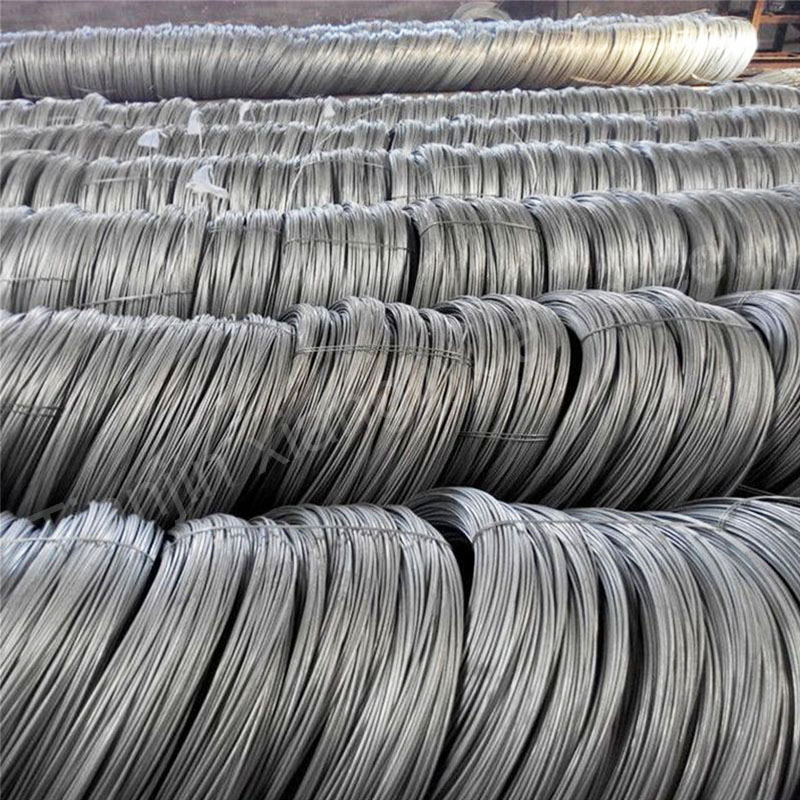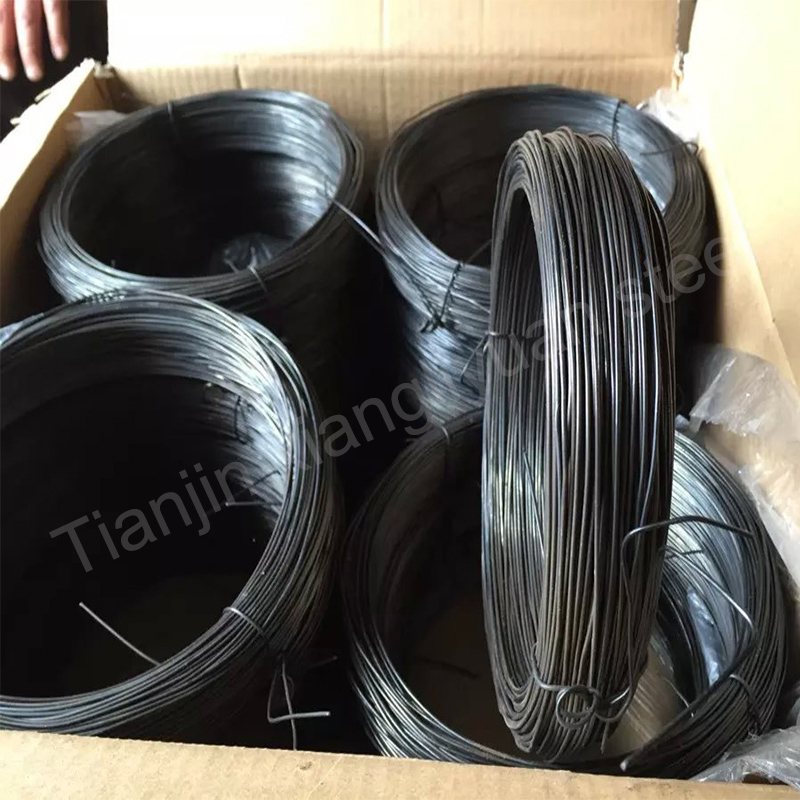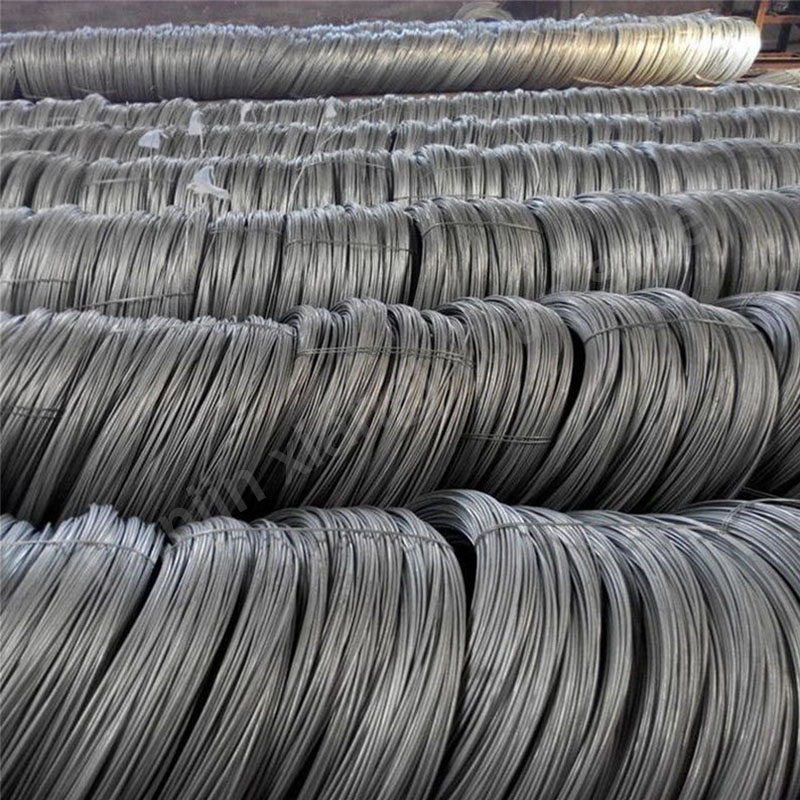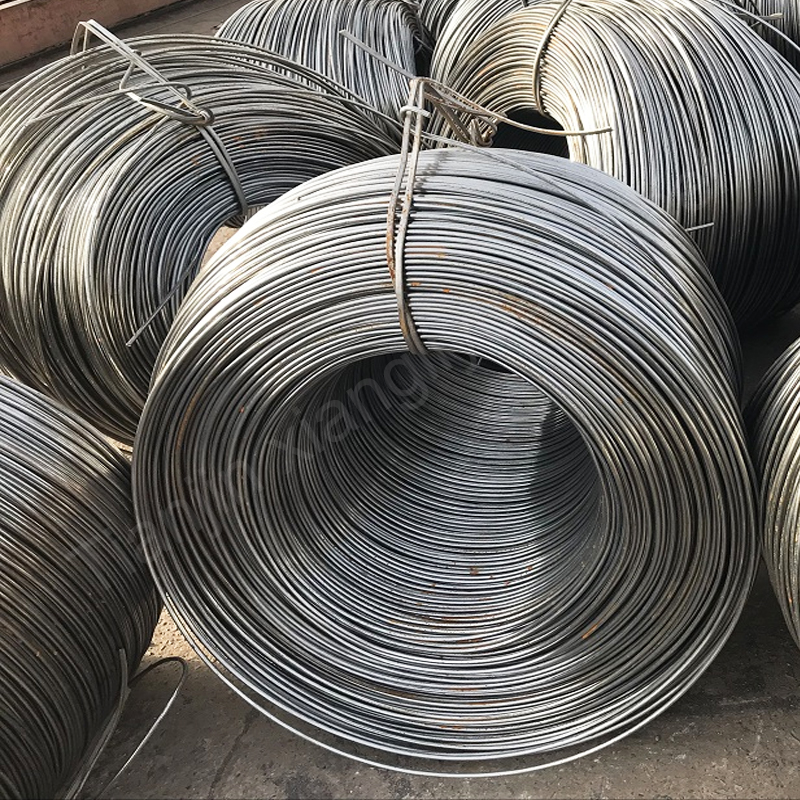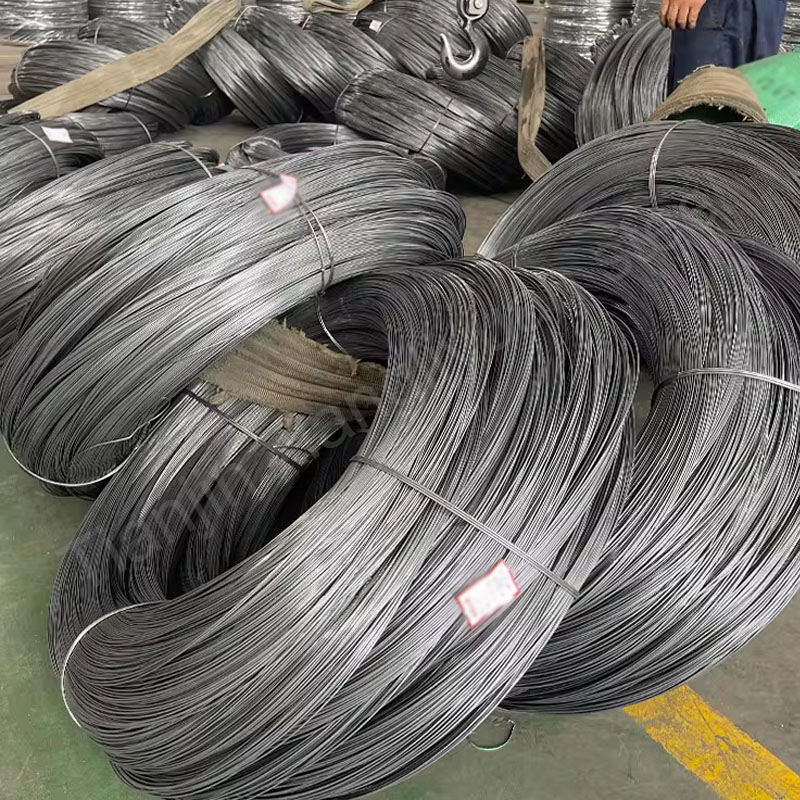Steel wire is one of the four major types of steel: plate, tube, profile, and wire. It is a reprocessed product made from hot-rolled wire rods by cold drawing.
The main processes of steel wire production include raw material selection, iron oxide removal, drying, coating treatment, heat treatment, wire drawing, and plating treatment. See steel wire raw materials for raw material selection. Iron oxide removal refers to the removal of iron oxide on the surface of wire rods or intermediate wire billets. The purpose is to prevent iron oxide from damaging the mold and steel wire surface during drawing, prepare good surface conditions for subsequent coating or plating treatment, and reduce friction and reduce drawing force during drawing. There are two major methods for removing iron oxide: chemical and mechanical methods, see chemical descaling of wire rods and mechanical descaling of wire rods.
Classification of steel wires
1. Classification by cross-sectional shape: round, square, rectangular, triangular, elliptical, flat, trapezoidal, Z-shaped, arched, etc.
2. Classification by size: extra-fine <0.1 mm, relatively fine 0.1~0.5 mm, fine 0.5~1.5 mm, medium 1.5~3.0 mm, coarse 3.0~6.0 mm, relatively coarse 6.0~8.0 mm, extra-coarse >8.0 mm; classification by strength: low strength <390 MPa, relatively low strength 390~785 MPa, ordinary strength 785~1225 MPa, relatively high strength 1225~1960 MPa, high strength 1960~3135 MPa, extra-high strength >3135 MPa.
3. Classification by use: ordinary quality steel wire includes welding rod, nail making, mesh making, packaging and printing industry steel wire; cold forging steel wire is used for cold heading rivets, screws, etc.; electrical steel includes special steel wire for the production of overhead communication lines, steel core aluminum stranded wire, etc.; textile industry steel wire includes coarse combs, heald 013, needle clothing and needle wire; rope wire is specially used for the production of wire rope and spokes; spring steel wire includes springs and spring washers, pianos, tires, cords and transport tapes; structural steel wire refers to the watch industry, ball bearings, automatic machine free cutting steel wire; stainless steel wire includes stainless steel wire for the above purposes and surgical implant wire; resistance alloy wire is used for heater elements and resistance elements, and tool steel wire includes steel wire and shoe wire.
4. According to chemical composition, it is divided into: low carbon steel wire; medium carbon steel wire; high carbon steel wire; low alloy steel wire; medium alloy steel wire; high alloy steel wire; special performance alloy wire.
5. According to the final heat treatment method, it is divided into: annealed steel wire; normalized steel wire; quenched and tempered steel wire; quenching and tempering steel wire; solution treated steel wire.
6. According to the processing method, it is divided into: cold drawn steel wire; cold drawn steel wire; cold rolled steel wire; hot drawn steel wire; straight steel wire; silver bright steel wire; polished steel wire; polished steel wire.
7. According to the surface state, it is divided into: smooth steel wire; bright heat treated steel wire; pickled steel wire; black skin steel wire; coated steel wire.
8. According to the tensile strength, it is divided into: low strength steel wire; lower strength steel wire; ordinary strength steel wire; higher strength steel wire; high strength steel wire; ultra-high strength steel wire.
Process performance of steel wire
1. Cold forging: The steel wire is subjected to a specified degree of forging deformation at room temperature and shows its defects.
2. Bending: repeated bending, unidirectional bending
3. Torsion: the ability of the steel wire to withstand plastic deformation when twisted in one direction or alternating directions, and to show the unevenness of the steel wire, surface defects and some internal defects.
4. Winding: the ability of the steel wire sample to withstand winding deformation when it is spirally wound on the mandrel specified in the standard to the specified number of turns, showing surface defects and coating firmness.

